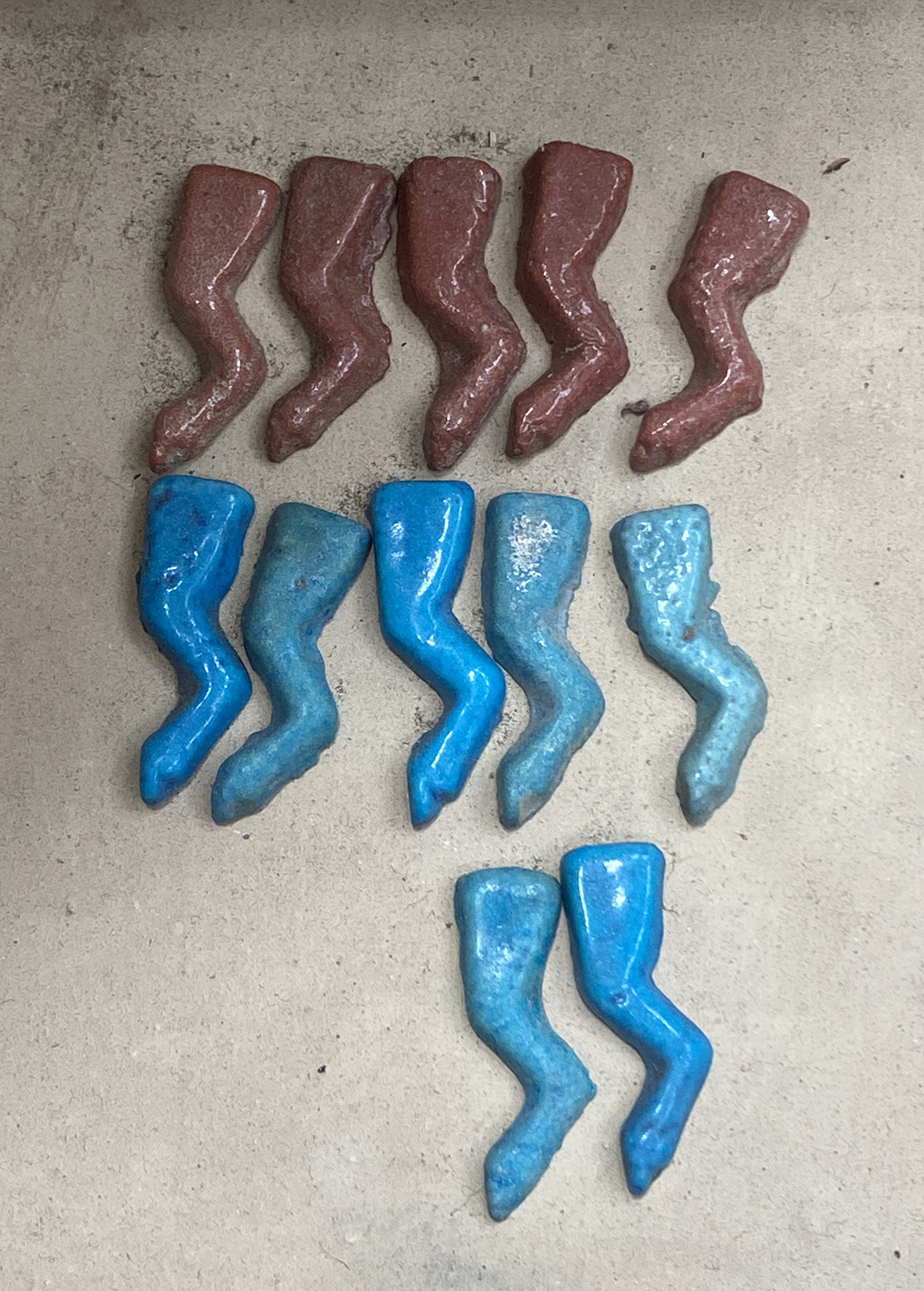Difference between revisions of "Template:POTD protected"
Occultwiki (talk | contribs) |
Occultwiki (talk | contribs) |
||
| (2 intermediate revisions by the same user not shown) | |||
| Line 1: | Line 1: | ||
{| role="presentation" style="margin:0 3px 3px; width:100%; text-align:left; background-color:transparent; border-collapse: collapse; " | {| role="presentation" style="margin:0 3px 3px; width:100%; text-align:left; background-color:transparent; border-collapse: collapse; " | ||
|style="padding:0 0.9em 0 0;" | [[File: | |style="padding:0 0.9em 0 0;" | [[File:Foreleg of Set Amulets.jpg|300px|thumb|]] | ||
|style="padding:0 6px 0 0"| | |style="padding:0 6px 0 0"| | ||
'''[[ | '''[[Set]]''' is a god of deserts, storms, disorder, violence, and foreigners in ancient [[Egyptian religion]]. In a legend in the [[Pyramid Texts]], as punishment for his rebellion and overthrow of Osiris, Set was transformed into a sacrificial red ox (some legends say a red goat). His foreleg (''xpS'') was cut off and thrown into the sky where it became Meskhetiu (''Msxtyw''), a group of seven stars in the northern sky (likely either Ursa Major or Ursa Minor). | ||
The foreleg was not only a protective god, but it was also a lasting symbol of power and strength, especially of strength in the afterlife. Thousands of blue or red foreleg amulets have been found wrapped in the bandages of mummies across all periods of Egyptian history, and drawings of ''Msxtyw'' feature prominently alongside the [[Egyptian decans|decanal stars]] in the Middle Kingdom Period coffins. | |||
<p><small>Photographer: [[Travis McHenry]]</small></p> | <p><small>Photographer: [[Travis McHenry]]</small></p> | ||
[[:Category:Images|'''(More Images)''']] | [[:Category:Images|'''(More Images)''']] | ||
<div class="potd-recent" style="text-align:right;"> | <div class="potd-recent" style="text-align:right;"> | ||
Revision as of 02:37, 15 April 2024
|
Set is a god of deserts, storms, disorder, violence, and foreigners in ancient Egyptian religion. In a legend in the Pyramid Texts, as punishment for his rebellion and overthrow of Osiris, Set was transformed into a sacrificial red ox (some legends say a red goat). His foreleg (xpS) was cut off and thrown into the sky where it became Meskhetiu (Msxtyw), a group of seven stars in the northern sky (likely either Ursa Major or Ursa Minor). The foreleg was not only a protective god, but it was also a lasting symbol of power and strength, especially of strength in the afterlife. Thousands of blue or red foreleg amulets have been found wrapped in the bandages of mummies across all periods of Egyptian history, and drawings of Msxtyw feature prominently alongside the decanal stars in the Middle Kingdom Period coffins. Photographer: Travis McHenry |
